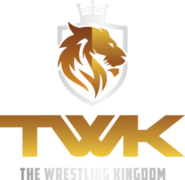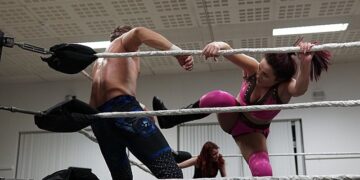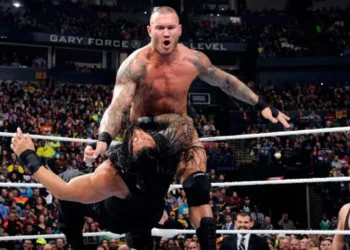Key Takeaways:
- Ric Flair, the wrestling legend, is preparing for a comeback in the wrestling ring.
- Flair’s training regimen focuses on physical fitness and honing his wrestling skills.
- The wrestler’s return is generating excitement among fans and fellow wrestlers.
- Flair’s determination and dedication to his craft are evident in his rigorous training routine.
Are you ready to witness one of the greatest comebacks in wrestling history?
Legendary wrestler Ric Flair is gearing up for an in-ring return, and the wrestling world is buzzing with anticipation.
Known for his flamboyant persona and unrivaled skills, Ric Flair is a name that resonates with die-hard fans and new enthusiasts alike.
But what does it take to prepare for such an epic comeback?
In this article, we’ll dive into the rigorous training regimen that Flair follows, his unique approach to mentoring the next generation of stars, and how he overcomes the challenges of age and injury.
Get ready to be inspired as we explore the incredible journey of Ric Flair’s training for his in-ring return.
| Training Aspect | Description |
| Type of Training | Intense cardiovascular and strength training |
| Workout Routine | Multiple workouts per day, focusing on different muscle groups and endurance |
| Diet and Nutrition | Strict diet plan to maintain optimal weight and energy levels |
| Injury Prevention | Regular stretching, warm-up exercises, and physiotherapy sessions |
| Ring Skills Refresher | Practicing basic moves, techniques, and timing with a trusted training partner |
Who is Ric Flair?
Ric Flair is a legendary professional wrestler who has had an illustrious career in the world of wrestling. He is widely regarded as one of the greatest wrestlers of all time.
Flair, known for his flamboyant personality and slick in-ring skills, has won numerous championships throughout his career.
With a career spanning several decades, he has become an iconic figure in the wrestling industry. Fans around the world have followed his journey and continue to admire his contributions to the sport.
The Importance of In-Ring Training
The Importance of In-Ring Training
Ric Flair’s Training Regimen
Ric Flair’s Training Regimen includes physical conditioning, wrestling technique and skills, mental preparation, and cardiovascular endurance.
Physical Conditioning
Physical conditioning is a vital component of any athlete’s training regimen, and Ric Flair is no exception.
He focuses on a combination of cardiovascular endurance, strength training, flexibility exercises, and agility drills to maintain peak performance in the ring.
Flair incorporates high-intensity interval training (HIIT), weightlifting, yoga, and plyometric exercises into his routine.
Additionally, he follows a balanced diet to fuel his workouts and promote muscle recovery.
By prioritizing physical conditioning, Flair ensures that he is always ready for the demanding nature of professional wrestling.
Wrestling Technique and Skills
Wrestling technique and skills are essential for success in the ring. Mastering the fundamentals, such as takedowns, holds, and escapes, is crucial.
You need to develop strength, agility, and coordination through regular training and practice.
Learning various wrestling moves, such as suplexes, slams, and submissions, will enhance your versatility and ability to control your opponent. Building a solid foundation in technique and honing your skills will greatly improve your performance and chances of victory.
Keep pushing yourself and never stop refining your abilities.
Mental Preparation
Mental preparation is key to success in any endeavor, including professional wrestling. To excel in the ring, you need to cultivate a focused and positive mindset.
One important aspect of mental preparation is visualization.
Take time to imagine yourself performing at your best, hitting every move with precision and agility. This will help build confidence and ensure that you are mentally prepared for the challenges ahead.
Additionally, maintaining a strong support network and employing strategies to manage stress can also contribute to your mental well-being and readiness for competition.
Cardiovascular Endurance
Cardiovascular endurance is vital for any athlete, including professional wrestlers like Ric Flair.
It refers to the ability of the heart, lungs, and circulatory system to deliver oxygen and nutrients to the muscles during physical activity.
To improve cardiovascular endurance, you can try exercises such as running, swimming, cycling, or high-intensity interval training.
These activities help strengthen the heart and lungs, allowing them to work more efficiently.
Don’t forget to warm up and cool down properly, stay hydrated, and gradually increase the intensity and duration of your workouts.
Remember, consistency is key to improving your cardiovascular endurance.
Training with Legends and Young Talent
Get ready to dive into the world of training with legends and young talent as Ric Flair hones his skills and exchanges knowledge with wrestling icons and promising newcomers.
Learning from Past Legends
Learning from Past Legends One important aspect of improving in any field is learning from those who came before you. In the world of professional wrestling, this holds true as well.
Past legends have paved the way for the current generation, and studying their techniques and strategies can greatly enhance your own skills.
By observing legends like Ric Flair, Stone Cold Steve Austin, and The Rock, you can gain valuable insights and incorporate them into your own wrestling style. Pay attention to their timing, storytelling abilities, and crowd interaction to elevate your performance in the ring.
Mentoring and Building Relationships
Mentoring and building relationships is at the core of personal and professional growth. By guiding and supporting others, you not only help them succeed but also foster meaningful connections.
I believe that open communication, active listening, and empathy are fundamental in building strong relationships.
Sharing knowledge, providing feedback, and offering guidance can positively impact someone’s development. Building trust and showing genuine interest in others’ growth will create a supportive and nurturing environment.
So, don’t hesitate to become a mentor and start building relationships that can last a lifetime.
Overcoming Challenges and Injuries
To overcome challenges and injuries in the ring, wrestlers must rehabilitate from previous injuries and adjust to the effects of aging while maintaining their fitness levels.
Rehabilitating from Previous Injuries
Rehabilitating from previous injuries can be a challenging process, but with proper care and dedication, you can make a successful recovery. Here are some key steps to consider:
- Consult a healthcare professional: Seek guidance from a qualified medical professional who can assess your injury and create a customized rehabilitation plan.
- Follow your rehabilitation plan: Stick to the exercises and treatments recommended by your healthcare professional. Consistency is vital for promoting healing and building strength.
- Take it slow: Gradually increase the intensity and duration of your rehabilitation exercises to avoid re-injury. Pushing too hard too soon can hinder your progress.
- Rest and recover: Allow yourself enough time to rest and recover between rehabilitation sessions. Your body needs time to heal and rebuild.
- Listen to your body: Pay attention to any pain or discomfort during your rehabilitation. If something doesn’t feel right, consult your healthcare professional.
- Incorporate cross-training: Engage in other low-impact activities to maintain overall fitness and prevent overloading the injured area.
- Stay positive and patient: Rehabilitation can be a lengthy process, and setbacks may occur. Stay positive, be patient, and trust the process.
Remember, each injury and individual is unique, so be sure to consult with a healthcare professional for personalized guidance in your rehabilitation journey.
Adjusting to Aging and Maintaining Fitness
As we age, it’s important to adjust our fitness routines to accommodate our changing bodies.
Here are some tips for adjusting to aging and maintaining fitness:
- Listen to your body: Pay attention to any aches, pains, or limitations you may have. Modify exercises accordingly to prevent injury.
- Stay active: Incorporate a mix of cardio, strength training, and flexibility exercises into your routine to maintain overall fitness and prevent muscle loss.
- Adapt your workouts: Choose low-impact exercises like swimming or cycling to reduce stress on joints. Consider working with a personal trainer who can create a customized program for you.
- Prioritize recovery: Give your body time to rest and recover between workouts. Focus on activities like stretching or yoga to improve flexibility and reduce stiffness.
- Stay consistent: Make exercise a regular part of your routine to maintain fitness levels. Consistency is key to staying healthy and active as you age.
Remember, it’s never too late to start or adjust your fitness routine.
Start slow, listen to your body, and make adjustments as needed to stay fit and healthy as you age.
Preparing for a Potential Comeback
Preparing for a Potential Comeback involves focusing on Motivation and Drive, Strategy and Match Planning, Ring Rust and Timing, and Balancing Health and Safety.
Motivation and Drive
Motivation and drive are essential for success in any endeavor.
It’s what gets you out of bed in the morning, fuels your passion, and keeps you going when things get tough.
When you have a strong desire and determination to achieve your goals, you’re more likely to put in the necessary effort and overcome obstacles along the way.
Surrounding yourself with positive influences, setting realistic yet challenging goals, and celebrating small victories can help maintain your motivation.
Remember, it’s your passion and drive that will push you towards reaching new heights.
Strategy and Match Planning
Strategy and match planning are key elements in the world of professional wrestling. It’s essential to analyze your opponent’s strengths and weaknesses and develop a game plan accordingly.
Understanding the storytelling aspect of wrestling is also important as it helps create a captivating and engaging match for the audience.
Proper coordination with your opponent is crucial to ensure a smooth and exciting performance. Training, discussing ideas, and rehearsing moves will help you execute your strategy effectively and deliver a memorable match.
Ring Rust and Timing
Ring rust refers to the decline in an athlete’s performance due to a lack of competition.
When a wrestler takes a break from the ring, they may experience a temporary decrease in their timing and ability to execute moves.
It takes time to regain muscle memory and adjust to the fast-paced nature of professional wrestling.
To overcome ring rust, consistent training and practice are essential.
Staying in shape and regularly participating in matches or practice sessions helps maintain timing, agility, and overall performance.
It’s important for wrestlers to stay active to minimize the effects of ring rust.
Balancing Health and Safety
Balancing health and safety is essential when training for an in-ring comeback.
It’s important to prioritize your physical well-being while still pushing yourself to reach your goals.
Regularly consult with healthcare professionals to ensure you are in good condition to perform.
Listen to your body and take breaks when necessary without pushing through pain.
Incorporate proper warm-up and cool-down routines into your training regimen.
Find a balance between pushing yourself and preventing injuries by using appropriate techniques and gear.
Frequently Asked Questions about Ric Flair’s Training
How long does it take to train for an in-ring return?
Training for an in-ring return can vary depending on a wrestler’s individual circumstances, but on average, it takes several months to prepare.
This timeline allows for physical conditioning, skill refinement, and mental preparation.
The duration also accounts for any injuries or setbacks that may occur during the training process.
It is important to remember that consistency and dedication are key in order to ensure a successful and safe return to the ring.
What type of diet and nutrition does Ric Flair follow?
Ric Flair follows a balanced and healthy diet to fuel his body for his demanding wrestling career. He focuses on consuming lean proteins, such as chicken and fish, along with plenty of fruits and vegetables for essential vitamins and minerals.
Flair also incorporates complex carbohydrates, like whole grains, into his meals for sustained energy.
Hydration is a priority, so he drinks plenty of water throughout the day. Flair understands the importance of proper nutrition in maintaining his performance and overall well-being.
How does Ric Flair stay motivated after a long career?
After a long career, Ric Flair stays motivated by the love for what he does. He has a passion for professional wrestling that keeps him going.
Ric also surrounds himself with a supportive network, including family, friends, and fellow wrestlers, who inspire and encourage him to continue pursuing his dreams.
Furthermore, Flair sets new goals for himself, both inside and outside the ring, which helps him maintain a sense of purpose and drive. Motivation comes from within for Ric Flair, and his determination is what fuels his ongoing success.
What role does strength training play in Ric Flair’s regimen?
Strength training plays a vital role in Ric Flair’s regimen. It helps him build muscle, increase overall strength, and improve his physical performance inside the ring.
By focusing on exercises like weightlifting and bodyweight movements, Flair is able to enhance his power, endurance, and agility.
Strength training also helps prevent injuries by strengthening his muscles and joints. Additionally, it contributes to maintaining his iconic physique and keeping him in top form for his in-ring return.
How does Ric Flair prepare mentally for a comeback?
Ric Flair prepares mentally for a comeback by staying focused and determined. He visualizes success in the ring, visualizing his moves and strategies.
He also seeks guidance from experienced mentors and watches old matches to learn from his past performances.
Ric Flair practices mindfulness and meditation to calm his mind and stay present in the moment. Additionally, he sets achievable goals and celebrates small victories along the way, boosting his confidence and motivation.
How does Ric Flair handle potential injuries during training?
Ric Flair takes potential injuries during training seriously. He maintains a disciplined approach by prioritizing proper technique and safety measures.
He focuses on strengthening his body through conditioning exercises and stretches.
Additionally, he works closely with trainers and medical professionals to address any injuries promptly and appropriately. Flair understands the importance of injury prevention to ensure his longevity in the ring.
What challenges does Ric Flair face as an older wrestler?
As an older wrestler, Ric Flair faces several challenges. First, his body may not recover as quickly from injuries or intense physical activity.
Second, he may experience a decline in his strength, agility, and stamina over time.
Third, he may have to adapt his in-ring style to minimize the risk of injuries. Additionally, he may face challenges in keeping up with the younger and faster wrestlers in terms of speed and endurance.
Age-related health issues, such as joint pain and stiffness, could also be obstacles for him.
Overall, these challenges require Flair to prioritize his physical conditioning, seek medical assistance when needed, and make strategic adjustments to his wrestling technique.
Final Verdict
Ric Flair’s training for an in-ring return is a testament to his dedication, work ethic, and passion for professional wrestling.
Through rigorous physical conditioning, honing his wrestling technique, and maintaining mental preparation, Flair has shown that age is just a number when it comes to pursuing one’s dreams.
By learning from past legends and mentoring young talent, he has not only continued to grow as a performer but also contribute to the future of the sport.
Despite facing challenges and injuries, Flair’s resilience and commitment to rehabilitating and staying fit have allowed him to overcome obstacles.
As he prepares for a potential comeback, Flair’s motivation, strategic planning, and balanced approach to health and safety will remain essential.
In summary, Ric Flair’s training journey serves as an inspiration for aspiring athletes, reminding us that with determination and a relentless pursuit of greatness, anything is possible.
































